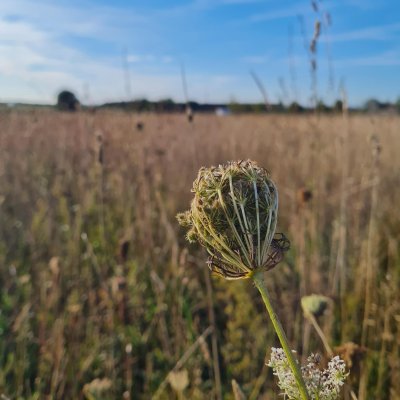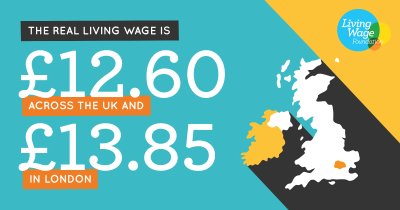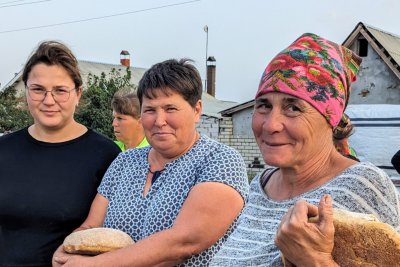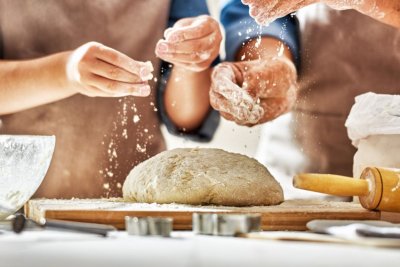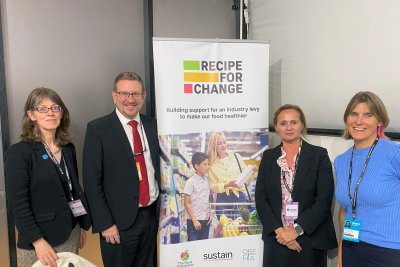As good today as it’s always been?
Real Bread Campaign coordinator Chris Young looks back on a 2009 Hovis advertisement complaint.
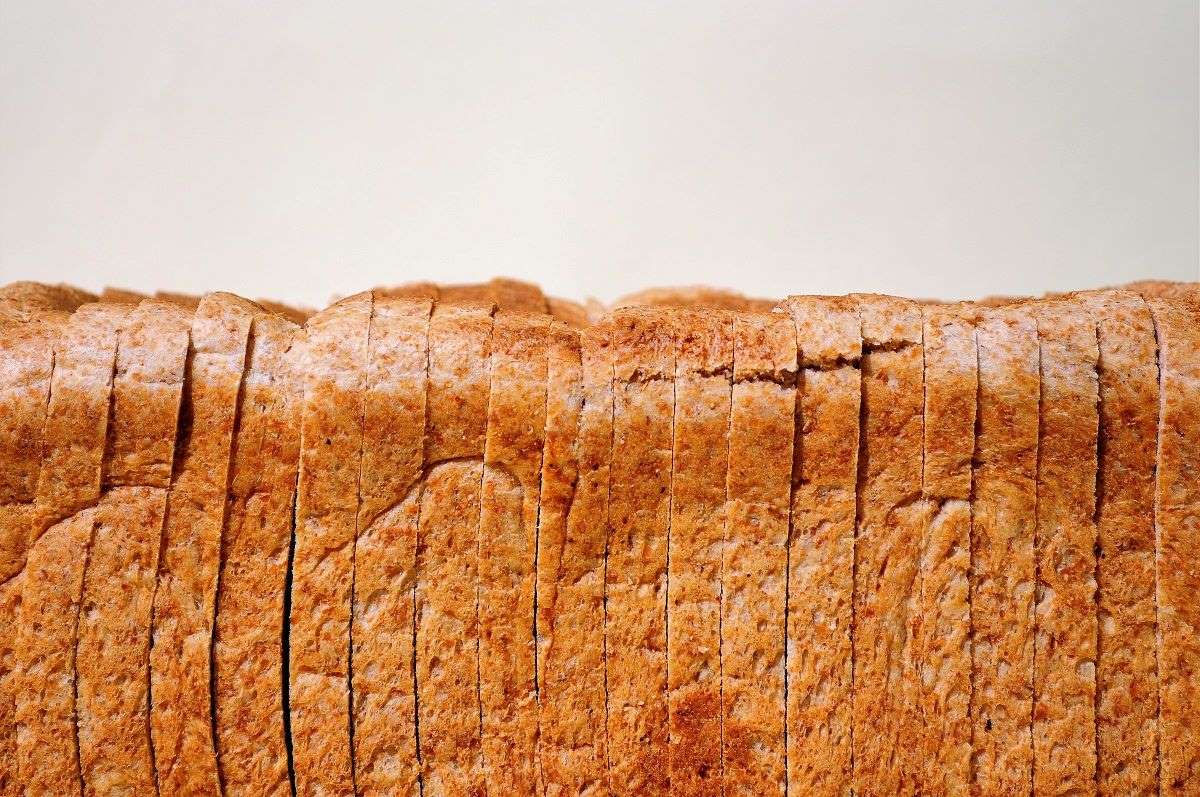
During the first year of the Campaign, I submitted a complaint to the Advertising Standards Authority (ASA) about a TV advert for rolls manufactured under Premier Food’s Hovis brand. The following is a slightly revised version of the complaint.
Since then, Hovis might have changed the way it does things for better…or worse.
Browned off
In the summer 2009 Hovis ‘Rolls’ television advertisement, a baker (or actor dressed as one) is shown easing mini loaf tins of dough into a small oven by hand and then also removing them manually. Cut to a girl then purchasing pre-packed Hovis rolls with a smile and a not inconsiderable dose of artistic licence in a small shop - well, the cafe in the former S. Jones dairy in east London faked up as a shop for the ad. The pitch concludes with the time-honoured Hovis slogan “as good today as it’s always been.”
In August that year, we complained to the ASA that we believed, in both its artisan baker narrative and concluding statement, ‘Rolls’ was misleading and therefore in breach of Section 5.1.1 of the TV Advertising Standards Code.
We focussed on the following:
- A complete change in composition of even the ‘original’ Hovis wheatgerm loaf, including the use of artificial additives
- Introduction of white loaves into the Hovis brand
- An increase in sugars in some lines
- A depletion in micronutrient levels in wheat
- A move to a centralised production system that not only deprives local communities of opportunities for skilled employment and decreases the likelihood of local reinvestment of funds but also requires the product to be transported over greater distances to retail outlets and then on to the customer
- The use of plastic packaging that is less sustainable than the original unwrapped loaves
Good additives?
Today’s Hovis is not the same product as it’s always been and we contest that it is not as good.
In 1887, Richard Smith and miller Thomas Fitton registered ‘Smith’s Patent Germ Flour’, which in 1890 was renamed Hovis. For many years, tens of thousands of skilled craft bakers around the country combined this flour with just water, yeast and a small amount of salt. This dough was then left to prove naturally over a number of hours and baked to produce ‘the little brown loaf.’
Even though Premier Foods still manufactures what they portray as the ‘little brown loaf,’ the wrapper of ‘Hovis Original Wheatgerm,’ actually names fourteen ingredients and additives. Studying the list, and those found across a selection of products that now help to comprise the Hovis brand, one finds the inventory to include sodium stearoyl-2-lactylate, mono- and diglycerides of fatty acids, mono and diacetyltartaric acid esters of glycerides of fatty acids, ascorbic acid, inulin, caramelised sugar, soya flour and vinegar.
Some of these extras are foodstuffs, though technically unnecessary in bread production. Furthermore, could it be that the added caramel in Hovis Wholemeal is what helps to push its sugar levels up to 4.1g per 100g, that is to say the equivalent of just under a teaspoon of sugar in every two slices? This is not only almost twice the level found in a typical wholemeal loaf 31 years ago but represents an increase in sugars of 3.2g per 800g loaf since The Times reported on the issue just two years ago. Such high sugar levels in what is a staple savoury foodstuff run counter to basic principles of healthy eating.
What place does vinegar have in bread making? Now that most Hovis is produced by Premier using industrial ‘no time’ techniques, one function of vinegar may be to help make up for the shortfall in the flavour development that used to have time to occur when independent bakeries made Hovis by the traditional ‘overnight sponge’ or even ‘bulk fermentation’ methods. If Hovis was as good as it’s always been, would it need to have its flavour enhanced in this way?
Conversely, others of these unnecessary extras, including mono and diacetyltartaric acid esters of glycerides of fatty acids (aka Diacetyl Tartaric (Acid) Ester of Monoglyceride or DATEM), are not foodstuffs. On 21st March 1997, the 106th meeting of the European Commission’s Scientific Committee on Food declared that '...the use of DATEM in foods for infants and young children in good health is not acceptable.' Although this opinion was later revised, how sound can the ‘as good…’ claim be when such a concern has been raised about substances used in the manufacture of the product to which it pertains?
In addition to these extra ingredients and additives, several recipes given by Premier for the commercial production of Hovis loaves by other bakers list an unspecified ‘improver’ and the centralised manufacture of some Hovis products could involve the use of undeclared processing aids. Whilst these substances are (currently) perfectly legal and deemed to be safe, a survey carried out earlier this year by AGR Food & Drink Market Research on behalf of the Real Bread Campaign and the Real Food Festival indicated that over 93% of people believe that such a lack of transparency in product labelling is ‘unacceptable.’ These factors of production and disclosure clearly are not what most people think of as ‘good’.
As good flour?
Another consideration is that products sold under the Hovis brand now include white loaves. White loaves are considerably lower in fibre than wholemeal and even brown loaves. As noted in Our Daily Bread, a joint report by The Federation of Bakers and the Flour Advisory Bureau, “a low fibre intake is associated with constipation and some gut diseases such as diverticulitis and an increased risk of bowel cancer.” The recommended daily intake of fibre for an adult of 18 grams can be found in eight and a half slices of Hovis Original Wheatgerm. In order to get this amount from Hovis Soft White, one would need to eat 18 slices, which would also involve the consumption of 16 grams of fat, 25 grams of sugars and over 7 grams of salt, more than the Food Standards Agency’s recommended maximum adult intake of the latter for a whole day. Furthermore, a study reported in the American Journal of Clinical Nutrition found that regular consumption of foods with a high glycaemic index, such as most white breads, is associated with a higher risk of a range of chronic diseases.
Clearly, in these respects, Hovis Soft White is not as good as the original wheatgerm loaf and as white bread now accounts for approximately 40% of Hovis sales, it can be said that the brand as a whole is not as good as it was before white loaves entered the portfolio in 1991.
As good wheat?
Focussing on the main ingredient in Hovis loaves, several studies have reported that the micronutrient levels in bread making wheat have been in steady decline. Whilst this factor is by no means unique to Hovis and current high-yielding varieties are arguably important to the growing worldwide demand for food, the use of contemporary wheat strains by Hovis means that the micronutrient profile of their loaves is probably not as good as it used to be.
It is interesting to note that in the iconic 1973 ‘Boy on the Bike’ campaign the slogan was: “as good for you as it’s always been.” Could it be that Premier Foods decided that saying Hovis is as good for you as it’s always been was a claim too far?
Given that Hovis products returned to being free from artificial preservatives and flavourings (though not free from sodium stearoyl-2-lactylate, mono- and diglycerides of fatty acids, mono and diacetyltartaric acid esters of glycerides of fatty acids) in 2003, and in 2005 began a (FSA target induced) reduction of salt, perhaps ‘not quite as bad in a couple of respects as it was until quite recently,’ would be more appropriate?
As good for jobs?
Produced in remote plants and purchased from supermarkets, it is very hard to see how the majority of today’s loaves of Hovis could be considered to be as good in socio-economic terms as their locally-baked predecessors.
A 1931 advertisement boasted that Hovis was ‘supplied by 20,000 bakers.’ Today, the Hovis division of Premier Foods has just 12 industrial baking plants, though the website of The Federation of Bakers is a little behind Premier’s schedule of closures and lists the company still operating 13. Even if every medium-sized and small, craft bakery in Britain also produced Hovis loaves, the number of bakeries supplying Hovis would not even reach a quarter of the 1931 figure.
When the Real Bread Campaign contacted customer services at Premier Foods to establish how many independent bakeries also baked Hovis loaves, they were only able to say that that Rank Hovis (the company’s flour milling and distribution operation) has ‘more than 200’ customers, not all of which are bread bakers. As for individuals, the whole of Premier Foods, of which Hovis is but one division, has fewer than 16,000 employees in total and figures from the National Association of Master Bakers in 2007 put the total number of bakers at around just 10,800.
Whilst the factors behind the decimation of the independent local bakery sector are complex and not solely attributable to one company, a factsheet published by The Federation of Bakers, of which Premier Foods is a member, acknowledges that competition from plant bakers (such as Hovis) has played a role and the fact that the production of Hovis no longer accounts for as many jobs as it once did surely is irrefutable.
As good for skills?
The loss cannot just be seen in terms of numbers employed in the production of Hovis but also in skills. Like the bakers before them, those who continue to work in the craft sector and the one portrayed by ‘Rolls,’ the bakers making Hovis in 1931 were highly trained craftsmen. They learned and developed not only manual talents but also the ability to judge the many variables involved with bread making in order to maintain the highest standards of the finished product.
We believe that the depiction of a craft baker in ‘Rolls’ is misleading, as today the production of most Hovis loaves is controlled by computer at the expense of employees learning those traditional craft skills. Whilst we do not denigrate the skills or people involved in industrial loaf manufacture, we feel that the job satisfaction amongst Hovis producers taken in general cannot be as good as it’s always been.
As good for local economies?
The centralisation of production also has had a huge negative impact on the contribution that the sale of Hovis loaves could make to local economies. Money spent with locally owned businesses is worth many times more to a local economy than purchasing from a company based outside the area. A study by the New Economics Foundation in Northumberland found that, of every £1 spent with local businesses, an average of 76% was re-invested locally, giving a total local spend of £1.76. By contrast, for every £1 spent with suppliers based outside the area, only 36p was returned. With most loaves now being produced by Premier Foods, rather than by local independent bakers, can Hovis’ current contribution to local economies be said to be as good as it’s always been? We think not.
This is not to mention the incalculable loss suffered by communities in which there is no longer a bakery from which to buy a loaf of Hovis, therein enter into conversation with other members of the community who work there and catch up on gossip with friends and other locals during the short walk, bike or bus ride there and back. Again, the factors behind the slow, continuing death of the British high street are complex and not down to just the business practices of one company but the channels through which most Hovis is now sold do not make as good a contribution to the social fabric of local communities as local independent bakeries.
As good for the environment?
According to company literature, Hovis flour was originally delivered by horse and cart, a fine example of sustainable transport with a low-carbon footprint. Today most of the transportation involved in the Hovis chain from grain to consumer is powered by fossil-fuel-consuming, carbon-dioxide-emitting trucks and lorries.
The greater the distances over which raw materials and finished food products are transported domestically, the greater the environmental damage that will be done. In the past, grain would have been transported to the nearest of numerous Rank Hovis mills. Each high street bakery would then source its flour from the closest of these mills. Today, with just 8 Rank Hovis mills and 12 Hovis bakeries in operation nationwide, the average distance travelled by Hovis grain and flour within Britain and therefore negative environmental impact in this respect is likely to be greater than it once was.
Moving on to the finished loaves, independent bakeries once sold their Hovis directly to local customers. Now around 2 million loaves of Hovis are transported by the aforementioned vehicles, not direct to the point of retail sale but via centralised distribution centres, an extra, environmentally damaging link in the chain. From these centres Hovis then makes 9000 daily deliveries to retail outlets. As further illustration of the scale of the petrol guzzling involved, Hovis’ Dagenham bread delivery distribution centre, the largest in Europe, sees an average of 80 articulated lorries arriving, and 120 trucks leaving, every day.
Many shoppers then make a long round trip by car to purchase their Hovis from an out-of-town supermarket. Whilst Premier Foods is not directly responsible for the whole of this chain of events, this sequence of how much Hovis now finds its way from bakery to the kitchen table is environmentally not as good as the previous, more sustainable model of local, in-community production.
Good plastic bags?
By the 1930’s, Hovis was supplying two million paper bags to bakers every week. Premier Foods now dispatches around two million loaves a day into the world in plastic wrappers. These packing films are produced from mineral oil, which unlike wood pulp, is a non-renewable resource. Also unlike paper, the films used are not bio-degradable. Whilst Premier could argue that the limited facility for re-cycling of polyethylene is the fault of local waste management providers, Premier chooses to use it, meaning that in environmental terms, even Hovis packaging is not as good as it was.
As good for sun bears?
Returning to the now extensive inventory of ingredients and additives used in the manufacture of Hovis products, one finds listed ‘vegetable fat.’ According to an article in The Independent earlier this year, entitled “The guilty secrets of palm oil: Are you unwittingly contributing to the devastation of the rain forests?” the three leading manufactured loaf brands, Warburtons, Hovis and Kingsmill, use palm oil. According to the article, “wildlife-rich forests of Indonesia and Malaysia are being chain-sawed to make way for palm-oil plantations” and “When the rainforests disappear almost all of the wildlife – including the orangutans, tigers, sun bears, bearded pigs and other endangered species – and indigenous people go.”
An article in the September 2008 issue of the Premier Foods publication, Premier Life, says that the company is “…at the forefront of sourcing sustainable third party certified palm oil as it becomes available" and that Premier Foods has "...a target to source 100 percent sustainable palm oil by 2011.." Whilst this piece does not confirm that Hovis products contain palm oil from unsustainable sources, can we take these lines as an assurance that they are yet free of it? The Real Bread Campaign does not.
A good decision?
Given the depletion in nutrient levels and increase in sugars in some lines; introduction of white loaves into the brand; adulteration of the products with non-food substances; move to a centralised production system that not only deprives local communities of opportunities for skilled employment and decreases the likelihood of local reinvestment of funds but also requires the product to be transported over greater distances to retail outlet and then on to the customer; the use of less sustainable packaging and allegations of the use of palm oil from unsustainable sources, we ask that the ASA rules that both the advertisement ‘Rolls’ and Premier Foods’ claim that Hovis “is as good as it has always been” are misleading.
On 16 December 2009, Four months after we submitted our complaint, the ASA rejected it. Read the full case.
The Real Bread Campaign's call for an Honest Crust Act of better loaf labelling and marketing legislation
Published Tuesday 16 April 2019
Real Bread Campaign: The Real Bread Campaign finds and shares ways to make bread better for us, better for our communities and better for the planet. Whether your interest is local food, community-focussed small enterprises, honest labelling, therapeutic baking, or simply tasty toast, everyone is invited to become a Campaign supporter.

